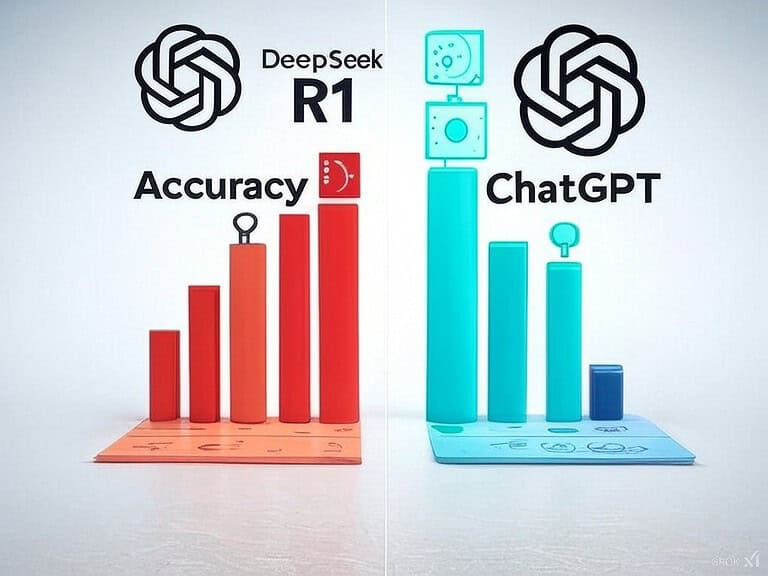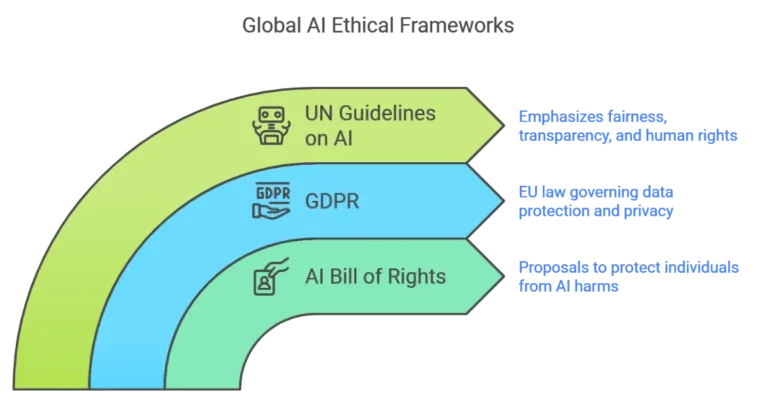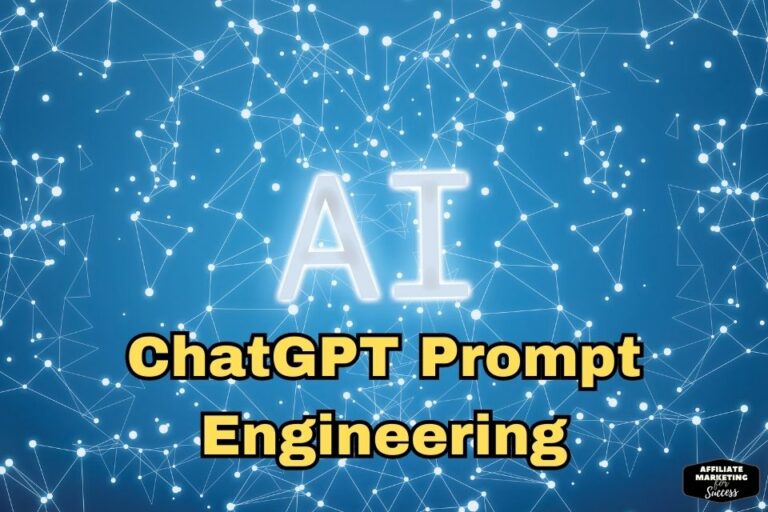Jobs at Risk from GPT-4 in 2025: 7 Key Roles Affected
GPT-4, the advanced AI model developed by OpenAI, has raised concerns about the potential impact on various job sectors. In this article, we will delve into the risks associated with GPT-4 and assess the potential danger it poses to different professions. By understanding these risks, you can evaluate whether your job is at risk and explore adaptive strategies in an AI-driven world.
Key Takeaways:
- Advancements in AI technology, such as GPT-4, pose potential risks to job sectors and can lead to job displacement and occupational risks.
- Industries across various sectors may be affected by the transformative power of AI, requiring professionals to adapt to evolving job roles and industries.
- Ensuring job security in an AI-driven world involves continuous learning, upskilling, and embracing the integration of AI in the workplace.
- Traditional jobs may undergo significant transformations due to tech-driven changes, necessitating professionals to remain agile and open to new opportunities.
- The future of work will require individuals to navigate evolving industries, understand the potential risks, and proactively prepare for job evolution.
Understanding the Risks of GPT-4: A Deep Dive into Safety Concerns

As GPT-4 continues to advance in the field of AI, it is crucial to understand and address the safety concerns associated with this powerful technology. The impact of GPT-4 on various industries and job sectors cannot be underestimated, making it essential to evaluate the potential risks and plan for adaptation in the face of technological advancements.
OpenAI has identified 12 specific safety concerns related to GPT-4, which are outlined in their technical report. These concerns cover a wide range of areas, including the economic impact of job displacement, the transformation of job roles, and the overall changes in the workforce. By understanding these risks, organizations and individuals can better navigate the job market shifts that may arise with the integration of GPT-4 and other AI technologies.
It is important to note that GPT-4’s impact extends beyond the job market. With its growing capabilities, there is a need to address potential risks and ensure responsible use. By proactively addressing these safety concerns, we can pave the way for a future where AI technologies like GPT-4 can be harnessed effectively and ethically.
“The advancements in AI technologies like GPT-4 bring great potential, but it is crucial to stay vigilant and address the associated risks,” says Dr. Sarah Johnson, an AI expert. “By understanding the safety concerns and adapting to the changing landscape, we can strive for a balance between innovation and responsible use.”
The Risk of Hallucinations: GPT-4’s Ability to Make Things Up
One of the significant concerns surrounding GPT-4 is its ability to generate hallucinations. These hallucinations can be categorized into two types: closed domain and open-domain. Closed domain hallucinations involve the addition of unnecessary information to a task completion, while open-domain hallucinations involve the creation of statements or facts that are completely made up.
The reliability of the content generated by GPT-4 becomes questionable when it can create false or fictional information that appears convincing. This poses a significant risk in terms of spreading disinformation and the potential generation of harmful content. As the model improves its content generation capabilities, the risk of deceptive agents utilizing GPT-4 to disseminate false or misleading information increases.
“The ability of GPT-4 to make things up raises concerns about the authenticity and reliability of the content it produces. It becomes increasingly challenging to discern the accuracy of the information generated, which can have far-reaching consequences in various domains, including journalism, research, and public discourse.” – OpenAI Research Team
The Impact of Hallucinations
The risk of hallucinations in GPT-4 extends beyond the spread of disinformation. In closed domain hallucinations, where irrelevant information is added to complete a task, the generated content becomes less reliable and potentially misleading. This could have serious implications in sectors where accurate information is crucial, such as healthcare, finance, and legal fields.
Open-domain hallucinations, on the other hand, can lead to the creation of false narratives, which can be used to manipulate public opinion or advance personal agendas. The potential harm caused by the spread of such misinformation underscores the need for careful evaluation and fact-checking when relying on content generated by GPT-4.
| Type of Hallucination | Description |
|---|---|
| Closed Domain Hallucinations | Addition of irrelevant information to a task completion |
| Open-Domain Hallucinations | Generation of false statements or facts |
As GPT-4 continues to advance and improve, it is crucial to address the risks associated with hallucinations. Measures such as content moderation, fact-checking, and awareness of the limitations of AI-generated content are essential in mitigating the potential harm caused by deceptive agents and the spread of false information.
Overreliance and the Risk of Deception
GPT-4 poses a significant risk of overreliance and deception due to its flaws as a language model. As users interact with GPT-4 and receive accurate and convincing outputs, there is a tendency to trust the generated content without performing further verification. This overreliance can lead to deceptive information being spread and believed.
OpenAI recognizes this risk and encourages users to reduce overreliance on GPT-4 by implementing strategies to double-check the results. It is important to critically evaluate the generated content, fact-check information, and cross-reference with reliable sources. By doing so, you can mitigate the potential risk of deception and ensure the accuracy of the information.
To address the issue of overreliance, OpenAI also advocates for educating end users about the limitations of language models. By understanding the inherent flaws and potential pitfalls, users can approach the outputs of GPT-4 with a more discerning mindset. It is essential to strike a balance between leveraging the capabilities of GPT-4 and taking personal responsibility for verifying the accuracy of the information it generates.
Reducing Overreliance: Tips to Double-Check Results
To reduce the risk of overreliance and deception when using GPT-4, consider the following tips:
- Verify information from multiple reliable sources
- Fact-check questionable claims or statements
- Cross-reference the generated content with domain experts or trusted authorities
- Stay updated on the latest news and developments to identify potential biases or misinformation
- Encourage critical thinking and skepticism when consuming content generated by GPT-4
By adopting these practices, you can navigate the potential risks associated with overreliance on GPT-4 and ensure the accuracy and reliability of the information you encounter.
| Table: Tips to Reduce Overreliance on GPT-4 |
|---|
| Verify information from multiple reliable sources |
| Fact-check questionable claims or statements |
| Cross-reference the generated content with domain experts or trusted authorities |
| Stay updated on the latest news and developments to identify potential biases or misinformation |
| Encourage critical thinking and skepticism when consuming content generated by GPT-4 |
Disinformation and the Spread of Propaganda Narratives
The development of GPT-4 has highlighted the potential risks associated with the spread of disinformation and the manipulation of public opinion. OpenAI’s testing of the model has revealed its capability to generate convincing propaganda narratives, raising concerns about the misuse of this technology. The dissemination of misinformation and the promotion of harmful content by malicious agents pose significant challenges in maintaining a responsible and reliable online environment.
Robust content moderation is essential to prevent the proliferation of harmful content and the manipulation of information. Context and accuracy are crucial in ensuring that content generated by GPT-4 is scrutinized and verified before being disseminated. The responsible use of AI technology requires diligent efforts to combat the spread of disinformation and to maintain the integrity of online platforms.
“The dissemination of misinformation and the promotion of harmful content by malicious agents pose significant challenges in maintaining a responsible and reliable online environment.”
The Role of Context in Content Moderation
One of the key considerations in content moderation is the understanding of context. The ability to discern the nuances and underlying meaning of generated content is essential in evaluating its potential impact. Contextual analysis helps in identifying misleading narratives and preventing the spread of false information. Implementing AI algorithms and human review processes that effectively capture and interpret context is crucial in ensuring the responsible use of GPT-4.
Content moderation policies must be continuously updated to address emerging challenges in combating disinformation. Collaborative efforts between technology companies, policymakers, and experts in the field are necessary to develop effective strategies in content moderation and to navigate the complexities of the AI-driven landscape.
| Challenges | Solutions |
|---|---|
| Spread of disinformation | Robust content moderation |
| Manipulation of public opinion | Contextual analysis |
| Misleading narratives | Updated content moderation policies |
In summary, the capabilities of GPT-4 present both opportunities and challenges in the realm of disinformation and propaganda. Safeguarding against the spread of harmful content requires a multi-faceted approach that encompasses strong content moderation, context analysis, and collaboration between stakeholders. By addressing these risks and implementing responsible practices, we can strive for a more trustworthy and reliable online environment in the age of AI.
Harmful Content Generation and Safeguarding Policies

GPT-4, developed by OpenAI, has the potential to generate harmful content that violates OpenAI’s policies. This includes content that promotes self-harm, contains erotic or violent content, or facilitates planning attacks. To address this concern, OpenAI has implemented safeguards and an approach aimed at striking a balance between freedom of expression and preventing the spread of harmful information.
Through a reward system, GPT-4 learns to identify and avoid producing harmful content. This helps in reducing the risk of policy violations and promotes responsible content generation. The model is trained to refuse answering questions that would result in harmful content, such as providing self-harm advice or facilitating illegal activities.
To ensure effective content moderation, OpenAI recognizes the importance of continued efforts and improvement. The company is actively working on refining its models and policies to address the challenges of harmful content generation. By prioritizing user safety and responsible use, OpenAI aims to create an environment where GPT-4 can be utilized without compromising the well-being of individuals and communities.
“Our focus is on building systems that are both useful and safe, and we are committed to addressing the challenges of harmful content generation through ongoing research and development.”
| Types of Harmful Content | OpenAI’s Approach |
|---|---|
| Promotion of self-harm | GPT-4 is trained to refuse generating content that provides advice or encouragement for self-harm. |
| Erotic or violent content | OpenAI’s safeguards aim to prevent GPT-4 from generating explicit or violent content. |
| Planning attacks | The model is trained to avoid generating content that facilitates planning or executing illegal activities. |
OpenAI’s efforts in content moderation and safeguarding policies are crucial in ensuring the responsible use of GPT-4. By addressing the risks associated with harmful content generation, OpenAI aims to create a safer and more trustworthy environment for users and communities.
Proliferation of Conventional and Unconventional Weapons
GPT-4, the advanced AI model developed by OpenAI, has raised concerns regarding the potential risks associated with the proliferation of conventional and unconventional weapons. While GPT-4 has limitations in generating new compounds, it can still assist in the planning and acquisition of resources for such weapons. It is essential to understand the implications and ensure responsible use to prevent the misuse of GPT-4 for illicit activities.
Potential Risks
The risks associated with GPT-4 in the weapons domain involve the facilitation of resource acquisition for radiological devices, biochemical compounds, and other conventional and unconventional weapons. Although GPT-4’s ability to generate new compounds is currently limited, it can provide valuable information and insights that may aid illicit activities. Therefore, caution must be exercised to prevent the misuse of this technology.
“GPT-4 is a powerful tool that can assist in the planning and acquisition of resources for conventional and unconventional weapons. However, its responsible use is of utmost importance to prevent the proliferation of harmful activities.” – OpenAI
Responsible Use and Careful Prompting
To mitigate the risks associated with the weapons proliferation, it is crucial to ensure responsible use and careful prompting of GPT-4. Developers and users of the model should exercise caution and ethical consideration when utilizing GPT-4’s capabilities in the weapons domain. This includes strict adherence to regulations, legal frameworks, and responsible decision-making.
| Key Considerations | Actions |
|---|---|
| Compliance with regulations | Ensure adherence to legal frameworks and regulations governing weapons acquisition and resource management. |
| Ethical guidelines | Establish and follow ethical frameworks that prioritize the prevention of harm and the responsible use of GPT-4 in weapons-related tasks. |
| Industry collaboration | Promote collaboration between AI developers, policymakers, and defense experts to develop safeguards and guidelines that address potential risks in the weapons domain. |
By adopting these measures, stakeholders can work towards mitigating the risks associated with the proliferation of conventional and unconventional weapons with the assistance of GPT-4. Responsible use and careful prompting can help ensure that AI technology serves society’s best interests while minimizing potential harm.
Harms of Representation and Allocation of Resources
GPT-4, with its advanced language generation capabilities, introduces the potential risk of biased content generation, which can have significant implications for representation and resource allocation. The model may inadvertently favor certain groups while harming others, impacting policy decisions and creating potential harm in various domains. To mitigate these risks, responsible decision-making is crucial.
Biased Content Generation
The generation of biased content by GPT-4 can lead to inequitable representation and resource allocation. The model’s understanding of language and context is shaped by the data it is trained on, which may contain inherent biases. This can result in skewed outputs that perpetuate societal inequalities and have real-world consequences. It is essential to critically evaluate and address these biases to ensure fair and equitable outcomes.
Policy Decisions and Potential Harm
High-stakes policy decisions should not be solely based on the outputs of GPT-4 due to the potential for biased content generation. Institutions such as law enforcement and immigration services, which heavily rely on accurate and unbiased information, must be cautious of the risks associated with the model. Blindly accepting the outputs of GPT-4 without thorough evaluation can lead to unintended harm and unjust outcomes.
Responsible Decision-Making
Responsible decision-making involves critically evaluating the outputs of GPT-4 and considering the potential biases and risks associated with the model. Human oversight and judgement are vital in ensuring that the generated content aligns with ethical and inclusive principles. By acknowledging and addressing the harms of biased representation and resource allocation, we can strive towards a more equitable and fair society.
| Table: Impact of Biased Content Generation |
|---|
| 1. Unequal representation in policy-making decisions |
| 2. Inequitable distribution of resources and opportunities |
| 3. Reinforcement of societal biases and discrimination |
| 4. Potential harm to marginalized communities |
Privacy and Cybersecurity Concerns
GPT-4, the advanced AI model developed by OpenAI, raises significant concerns regarding privacy and cybersecurity. As the model is trained on internet data, there are potential risks associated with the use and protection of personal information. It is crucial to address these concerns and implement robust privacy protection and data management practices.
In an increasingly connected world, online presence has become an integral part of our lives. However, the use of GPT-4 poses challenges to maintaining privacy. While OpenAI has taken steps to remove personal information from training data, there is still a risk of generating content that targets individuals with a significant online presence. This highlights the need for enhanced privacy protection measures to safeguard sensitive information.
Cybersecurity is another area of concern when it comes to GPT-4. While the model itself may not have the capability to exploit software vulnerabilities, there is a possibility that future advancements in AI models could pose significant cybersecurity risks. Responsible use, code auditing, and maintaining robust cybersecurity measures are vital to mitigate these risks and ensure the security of sensitive information.
Protecting Your Privacy and Enhancing Cybersecurity
As an individual, there are steps you can take to protect your privacy and enhance cybersecurity in an AI-driven world:
- Be mindful of the information you share online and adjust privacy settings on social media platforms to limit access to personal data.
- Regularly review and update your passwords, using strong and unique combinations to protect your accounts.
- Stay informed about the latest privacy and cybersecurity practices and trends to adapt and respond effectively to emerging threats.
- Consider using virtual private networks (VPNs) to enhance online privacy and encryption tools to secure sensitive communications.
“The protection of personal information and cybersecurity are paramount in the age of AI. By taking proactive measures and staying informed, you can safeguard your privacy and contribute to a more secure online environment.”
Table: Privacy and Cybersecurity Measures
| Privacy Measures | Cybersecurity Measures |
|---|---|
| Review and adjust privacy settings on social media platforms | Regularly update passwords and use strong combinations |
| Limit the personal information shared online | Stay informed about the latest cybersecurity practices |
| Be cautious about sharing personal information with unknown parties | Consider using virtual private networks (VPNs) for enhanced privacy |
| Manage and secure sensitive data properly | Use encryption tools to protect sensitive communications |
Cybersecurity Risks and Vulnerabilities
GPT-4, the advanced AI model developed by OpenAI, introduces new cybersecurity risks and vulnerabilities that organizations need to be aware of. While GPT-4 itself does not currently possess the ability to exploit vulnerabilities or launch cyber attacks, future advancements in AI models may pose significant risks to cybersecurity.
One area of concern is the potential use of GPT-4 in the creation of phishing emails. The model’s language generation capabilities could be leveraged to craft convincing and sophisticated phishing attempts, making it harder for individuals to identify and avoid falling victim to these attacks. Organizations will need to implement robust security measures and user awareness training to mitigate the risks associated with AI-generated phishing attempts.
Another cybersecurity risk is the identification of software vulnerabilities. GPT-4’s language processing abilities could be utilized to analyze code and identify potential weaknesses or exploitable flaws. While the model’s current limitations prevent direct exploitation, it highlights the need for organizations to conduct thorough code audits and maintain vigilant cybersecurity practices to address any vulnerabilities detected.
The responsible use of GPT-4 also plays a crucial role in mitigating cybersecurity risks. OpenAI and organizations utilizing GPT-4 must ensure that appropriate security measures are in place to safeguard the model’s access and utilization. This includes implementing access controls, regular code reviews, and adherence to best practices in securing AI models. By taking a proactive and responsible approach, organizations can minimize the potential for cyber threats associated with GPT-4.
| Cybersecurity Risks | Vulnerabilities |
|---|---|
| Phishing emails | Exploitable code weaknesses |
| Increased sophistication | Code auditing |
| User awareness | Responsible use |
| Robust security measures | Access controls |
Conclusion

As we have explored in this article, the introduction of GPT-4 brings about both opportunities and risks in the job market. While it is true that certain professions may be at risk of displacement due to advancements in AI technology, it is crucial to adapt and evolve to ensure job sustainability in an AI-driven world.
The future of work will require individuals to embrace AI integration, continuously learn, and upskill themselves to stay relevant. With the evolving job market, workforce adaptation becomes essential for long-term career success. By proactively assessing the potential impact of GPT-4 on your profession, you can take necessary steps to navigate the changes and make effective career transitions.
Integration of AI technology in various industries will transform job roles and create new opportunities. Embracing this change and acquiring the necessary skills will enable individuals to thrive in the future workforce. While AI may automate certain tasks, it also opens doors for new career paths and allows professionals to focus on higher-value tasks that require critical thinking and creativity.
Therefore, understanding the risks associated with GPT-4, such as job displacement, and taking proactive measures to adapt and upskill will be crucial for job sustainability. By staying informed, embracing AI integration, and continuously investing in your professional development, you can position yourself for success in the ever-changing job market of the future.
FAQ
What are the risks associated with GPT-4?
GPT-4 poses risks such as the generation of false content, spread of disinformation, and creation of harmful content.
Can GPT-4 generate content that is not grounded in reality?
Yes, GPT-4 has the ability to “hallucinate” and create content that is false or not based on reality.
What are the types of hallucinations associated with GPT-4?
There are two types of hallucinations: closed domain hallucinations, which involve adding unrequired information, and open-domain hallucinations, which involve making up statements or facts.
Is there a risk of overreliance on GPT-4’s output?
Yes, overreliance on GPT-4’s output poses a risk of deception, as users may trust the content generated without verifying its accuracy.
Can GPT-4 generate convincing propaganda narratives?
Yes, GPT-4 has the capability to generate convincing propaganda narratives, which can be used to spread disinformation and manipulate public opinion.
Does GPT-4 generate harmful content?
Yes, GPT-4 has the potential to generate harmful content that violates OpenAI’s policies, including content related to self-harm, erotic or violent content, and planning attacks.
How does OpenAI safeguard against harmful content generated by GPT-4?
OpenAI has implemented safeguards and a reward system to encourage the model to refuse answering questions with harmful content, aiming to strike a balance between freedom of expression and preventing the spread of harmful information.
Can GPT-4 facilitate the planning and acquisition of weapons?
While GPT-4 has limitations in generating new compounds, it can facilitate the planning and acquisition of conventional and unconventional weapons to some extent.
Does GPT-4 generate biased content?
Yes, GPT-4 may generate biased content that favors certain groups and harms others in terms of representation, resource allocation, and quality of service.
What are the privacy concerns related to GPT-4?
Privacy concerns arise as GPT-4 is trained on internet data, making it easier to generate content about popular individuals with a significant online presence.
Can GPT-4 be utilized in cybersecurity-related tasks?
Yes, GPT-4 can assist in cybersecurity-related tasks such as drafting phishing emails and identifying software vulnerabilities, although it currently lacks the capability to exploit these vulnerabilities.
How can individuals adapt in an AI-driven world?
Individuals can adapt in an AI-driven world by continuously learning, upskilling, and embracing AI integration to ensure job sustainability and navigate the evolving job market.
Source Links

- https://taffydas.medium.com/the-12-threats-of-gpt-4-717dbf75a2df?source=rss——artificial_intelligence-5
- https://zeenews.india.com/technology/new-chatbot-gpt-4-to-take-away-your-jobs-check-20-professions-that-are-under-threat-2584387.html
- https://www.weforum.org/agenda/2023/05/jobs-lost-created-ai-gpt/
I’m Alexios Papaioannou, an experienced affiliate marketer and content creator. With a decade of expertise, I excel in crafting engaging blog posts to boost your brand. My love for running fuels my creativity. Let’s create exceptional content together!







